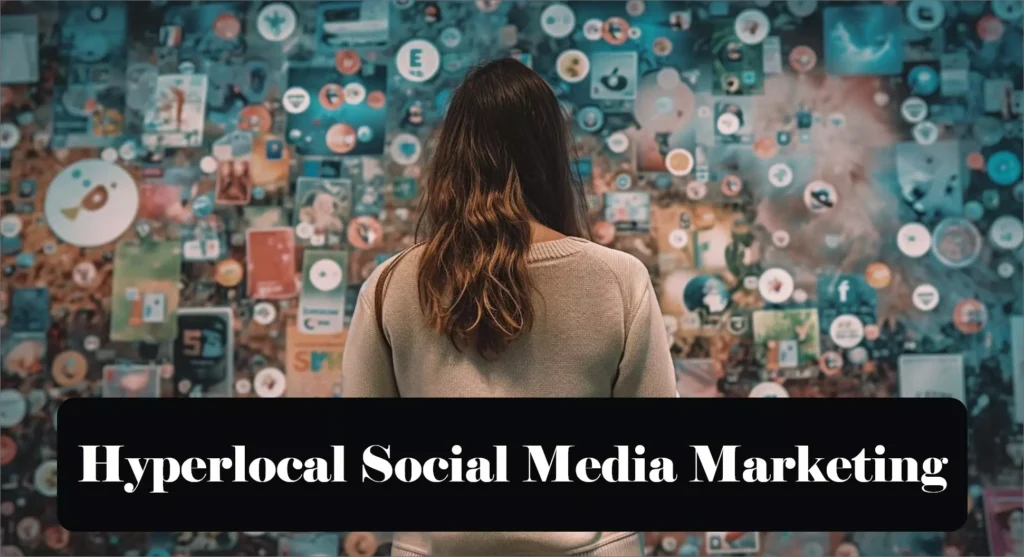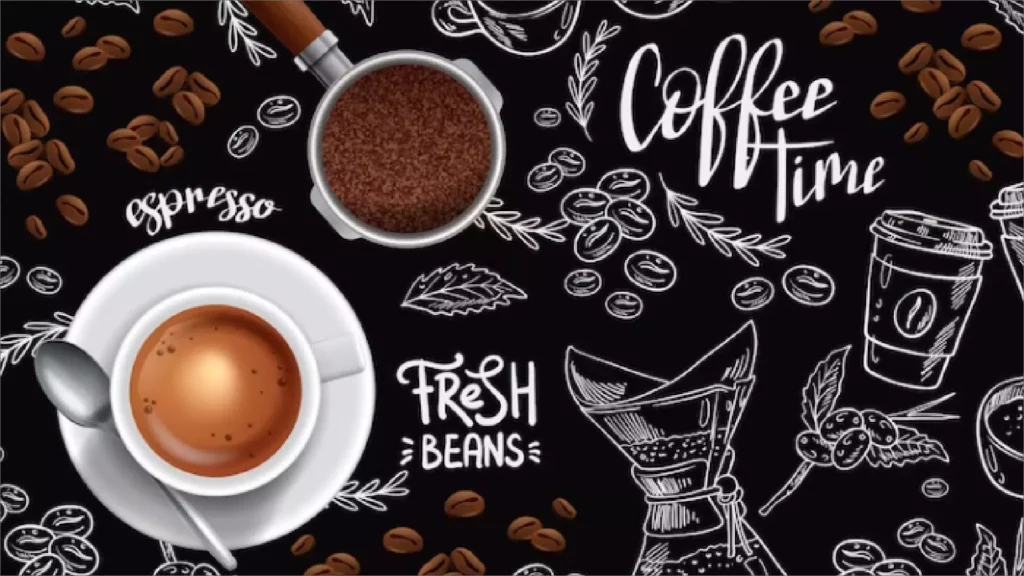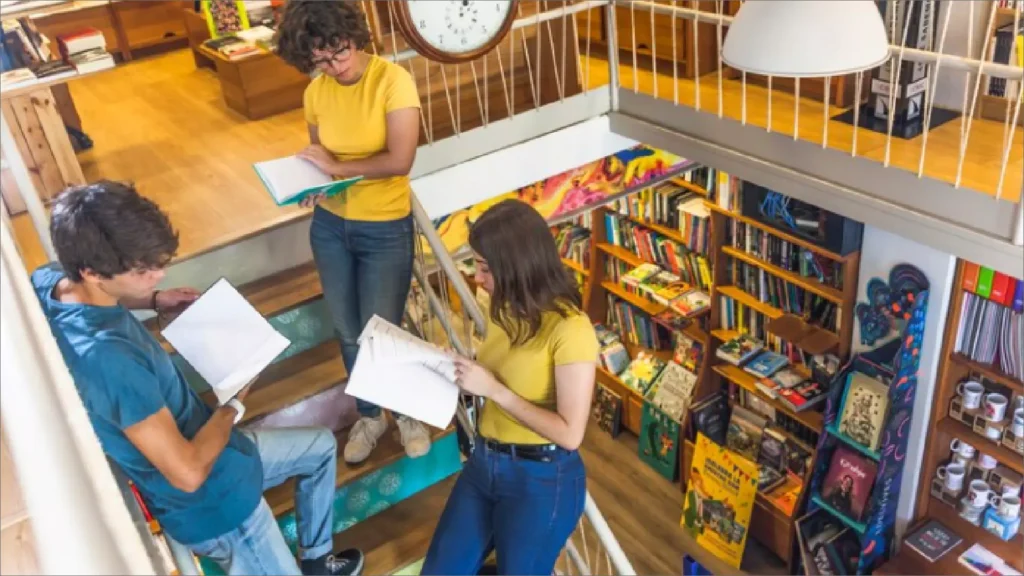
Hyperlocal Social Media Marketing : Boosting Your Business Locally

Hyperlocal Social Media Marketing is a targeted approach that involves reaching out to audiences within a specific, narrowly defined geographic area, typically a neighborhood, town, or city, using social media platforms. It enables businesses to connect with local customers in a highly personalized and relevant way, capitalizing on the power of community and proximity.
Local marketing, particularly in the age of digital and social media, has gained paramount significance. The key reason for this is the increasing consumer preference for localized experiences and the impact of global events, like the COVID-19 pandemic, that have heightened the need for supporting local businesses. Businesses that embrace local marketing can tap into the community’s loyalty, trust, and familiarity, ultimately boosting their reputation and customer base.
The purpose of this blog post is to explore the concept of hyperlocal social media marketing comprehensively. We will delve into its significance, the strategies involved, and the tools available to help businesses connect with their immediate communities effectively. Whether you’re a small local business or a larger enterprise looking to strengthen your local presence, this post will provide you with actionable insights and guidance on how to leverage the power of social media to boost your business locally.
Why Hyperlocal Social Media Marketing Matters?
In recent years, hyperlocal social media marketing has witnessed remarkable growth and is a trend that’s here to stay. According to industry statistics, businesses that incorporate hyperlocal strategies into their marketing efforts experience substantial returns.
A study by BIA/Kelsey indicates that nearly 97% of consumers use online media when researching products or services in their local area.
Additionally, a report by Facebook reveals that over 1 in 3 people in the United States use Facebook or Instagram to look for recommendations or reviews of local businesses and services. These statistics emphasize the growing importance of hyperlocal marketing in connecting with local customers.
4 Stages of Hyperlocal Social Media Marketing
Here are 4 important stages of hyperlocal social media marketing :
i. Know Your Consumer
This step involves understanding your audience, including their demographics, preferences, behaviors, and pain points. Knowing your consumers helps tailor your content and messages to resonate with them.
ii. Set Your Target
Define specific goals and objectives for your social media marketing efforts. These targets can include increasing engagement, website traffic, lead generation, or sales. Setting clear targets guides your strategy.
iii. Execute a Plan
Develop and implement a strategic plan that outlines the type of content you’ll create, the platforms you’ll use, and your posting schedule. Your plan should align with your target audience and goals.
iv. Monitor & Tracking Performance
Continuously track the performance of your social media activities. This involves analyzing data and metrics to assess how well your strategy is working. Adjust your plan based on insights gained through monitoring to improve results.
Benefits of Targeting Local Audiences
Lets explore what benefits you get for targeting local audience in your hyperlocal social media marketing :
1. Increased Relevance
One of the primary advantages of hyperlocal social media marketing is the heightened relevance it offers. By focusing on a specific geographical area, businesses can tailor their content and messaging to directly address the needs and interests of the local audience.
This relevance is appreciated by consumers, as it provides them with solutions, services, and products that are closely aligned with their immediate requirements.
2. Higher Engagement
Local audiences are more likely to engage with businesses that are actively involved in their communities. Hyperlocal marketing encourages meaningful interactions by promoting local events, news, and fostering a sense of belonging.
Engagement on social media platforms, such as likes, comments, and shares, tends to be significantly higher when the content is locally relevant, further enhancing the brand’s online presence.
3. Improved Conversion Rates
When businesses resonate with local audiences through hyperlocal marketing, it often leads to higher conversion rates. This is because potential customers are more inclined to trust and make purchases from businesses they perceive as part of their community.
Furthermore, local marketing enables businesses to offer targeted promotions and incentives, which can significantly boost conversion rates by appealing to the unique needs and preferences of the local customer base.
How to Implement Hyperlocal Social Media Strategies?

Implementing hyperlocal social media strategies can significantly enhance your ability to connect with local audiences and boost your business within a specific geographic area.
Here’s a step-by-step guide on how to implement these strategies effectively:
1. Define Your Target Location
- Identify the specific geographic area you want to focus on.
- Understand the demographics, interests, and behaviors of the people in that area.
2. Choose the Right Social Media Platforms
- Research which social media platforms are most popular and widely used by your target audience in the chosen location.
- Optimize your presence on these platforms by creating and/or updating your business profiles.
3. Create Hyperlocal Content
- Develop content that resonates with the local audience. This could include references to local landmarks, events, or news.
- Share user-generated content from local customers or clients to strengthen your connection with the community.
4. Utilize Geotargeting Features
- Take advantage of social media platform features that allow you to target posts and ads to specific geographic areas.
- Craft geo targeted content and promotions to reach your local audience effectively.
5. Build a Community and Foster Engagement
- Engage with the local community by responding to comments, mentions, and messages promptly.
- Organize or participate in local events and activities and promote them on social media.
- Run contests, polls, and Q&A sessions that involve and interact with local followers.
6. Leverage Local SEO
- Ensure that your business’s Name, Address, and Phone (NAP) information is consistent across all your online profiles, including social media, websites, and local directories.
- Optimize your website for local search with relevant keywords and location-specific landing pages.
7. Monitor and Analyze Results
- Regularly track key performance indicators (KPIs) like engagement rates, website visits, and conversion rates.
- Use social media analytics tools to assess the success of your hyperlocal campaigns.
- Make data-driven adjustments based on your findings to improve your strategies continually.
8. Overcome Challenges
- Be prepared for competition and saturation in hyperlocal markets. Differentiate your brand by offering unique value or experiences.
- Handle negative reviews and feedback professionally and promptly. Address customer concerns to maintain a positive local reputation.
9. Stay Informed and Adapt
- Keep an eye on local trends, news, and changes in consumer behavior within your target area.
- Adapt your strategies and content to reflect these changes, ensuring your brand stays relevant and aligned with the community’s evolving needs.
10. Collaborate with Local Influencers and Partners
- Partner with local influencers or businesses that have a strong presence in your target area.
- Co-create content or promotions with them to tap into their local reach and credibility.
Main Components of Hyperlocal Social Media Marketing
Hyperlocal social media marketing involves several key components to effectively target and engage with a local audience.
Here are the main components:
1. Geographic Targeting
The foundation of hyperlocal marketing is narrowing your focus to a specific geographic area, such as a neighborhood, town, or city. It’s essential to define the boundaries of your target location.
2. Platform Selection
Choose the social media platforms that are most popular among your local audience. Common choices include Facebook, Instagram, Twitter, and neighborhood-specific platforms like Nextdoor.
3. Content Localization
Create content tailored to the local audience. This may include references to local events, landmarks, or news, as well as language and cultural nuances specific to the area.
4. Geotargeting
Use geo targeting features on social media platforms to display content or ads only to users within your target area. This assures that you convey your message to the right people.
5. Local SEO Integration
Optimize your online presence, including social media profiles and websites, for local search. This includes using location-based keywords, claiming and optimizing your Google My Business listing, and ensuring consistent NAP (Name, Address, Phone) information.
6. Community Engagement
Actively engage with the local community by responding to comments and messages, participating in local events, and demonstrating your involvement in local causes or initiatives.
7. User-Generated Content
Motivate customers from the community to generate and distribute content that is associated with your business. User-generated content can build trust and authenticity within the community.
8. Local Partnerships and Influencers
Collaborate with local businesses, organizations, and influencers to expand your reach and credibility within the local market.
9. Localized Promotions
Offer local-specific promotions, discounts, or special deals to entice local customers to engage with your business.
10. Analytics and Measurement
Regularly monitor and analyze the performance of your hyperlocal marketing efforts. Key performance indicators (KPIs) may include engagement rates, website visits, conversion rates, and return on investment (ROI).
11. Reputation Management
Maintain a positive online reputation by responding to customer reviews, both positive and negative, professionally and promptly. Addressing concerns can enhance your local reputation.
12. Local Content Calendar
Create a content calendar that aligns with local events, holidays, and seasons. Plan your posts and campaigns to coincide with what’s happening in your target area.
13. Data-Driven Adjustments
Use insights from analytics to make data-driven adjustments to your hyperlocal strategies. Adapt your approach based on what works and what doesn’t.
Local SEO and Social Media

Integrating social media marketing with local SEO is essential for maximizing your online presence within your target geographic area.
Here’s how you can achieve this integration effectively:
1. Consistent Branding
Ensure that your branding elements, such as your business name, logo, and visual identity, are consistent across social media profiles and your website. This consistency reinforces your brand’s identity and helps with local SEO.
2. Quality Content
Share high-quality, relevant, and locally focused content on your social media profiles. This content can include posts about local events, news, and community involvement, which can help with SEO as well.
3. Link Building
Your website can benefit from valuable backlinks by having active social media profiles. When you link back to your website from your social media profiles, it can boost your website’s authority and improve your local search rankings.
4. Optimized Social Profiles
Fill out all sections of your social media profiles with accurate information, including your business’s name, address, phone number, and website URL. This information should match the NAP data on your website and other online directories.
5. User Engagement
Encourage user engagement on your social media profiles by responding to comments, reviews, and messages promptly. Engaged profiles are often favored by search engines.
6. Keyword Usage
Incorporate location-specific keywords in your social media posts and profiles to align with local SEO strategies. These keywords should reflect the geographic area you’re targeting.
7. Local Directories
Ensure that your business is listed accurately in local online directories, such as Google My Business, Yelp, and Yellow Pages. Consistency in your NAP information across these directories is crucial for SEO.
8. Citation Building
Acquire local citations on various websites and platforms. These citations should include your NAP details and be consistent with the information on your website and social profiles.
Case Studies and Examples of Hyperlocal Social Media Marketing
To illustrate the power of hyperlocal social media marketing, let’s explore some real-world examples of businesses that have executed successful campaigns within specific geographic areas:
A. Case Study : The Local Coffee Shop

Local Business
A cozy neighborhood coffee shop in Brooklyn, New York.
Campaign :
The coffee shop leveraged Instagram and Facebook to engage the local community. They featured user-generated content of customers enjoying their coffee, held weekly “Coffee Chat” live streams featuring local artists and musicians, and shared updates on neighborhood events.
Results:
The campaign not only boosted foot traffic but also increased social media followers. The coffee shop became a hub for community events and gatherings, and they saw a 20% increase in sales within six months.
B. Case Study: A Bookstore

Local Business
An independent bookstore in a small town in Colorado.
Campaign :
The bookstore used Facebook and Twitter to promote local book clubs and author visits. They regularly posted book recommendations with a local twist, like “Books by Colorado Authors” and “Reading Spots in [Town Name].”
Results:
The engagement on their social media pages soared. The local community felt a deeper connection to the bookstore, which translated into increased in-store and online book sales. They also saw a 15% rise in event attendance.
Analyze What Made Hyperlocal Social Media Marketing Effective
These case studies provide insights into the factors that made these hyperlocal social media marketing campaigns successful:
Community Engagement :
Both businesses actively engaged with their local communities, creating content that resonated with their neighbors and encouraged participation.
User-Generated Content :
Leveraging content created by local customers added authenticity and encouraged others to engage.
Local Relevance :
The businesses consistently aligned their content with local events and interests, making their social media presence highly relevant.
Consistency :
Regular, timely posts and responses to comments and messages maintained an active and engaged community.
Cross-Promotion :
The use of multiple social media platforms allowed for wider exposure and engagement.
Measurable Goals :
The businesses tracked their KPIs to assess the effectiveness of their campaigns and made adjustments based on the data.
Hyperlocal Social Media Marketing Platforms

Hyperlocal social media marketing platforms are specialized tools and platforms designed to target and engage with a very specific and localized audience. These platforms are particularly useful for businesses that want to reach customers in a particular neighborhood, town, or even a specific street or building.
Hyperlocal marketing is all about connecting with people in your immediate vicinity, and these platforms can help you achieve that.
Here are some examples and strategies for hyperlocal social media marketing:
i. Nextdoor - Social Media Platform
Nextdoor is a social networking platform designed for neighborhoods. It allows businesses to create local business pages and connect with residents in their area. You can share local promotions, events, and updates with your immediate community.
ii. Local Facebook Groups
Joining and participating in local Facebook groups related to your business’s niche or location can be an effective way to engage with a hyperlocal audience. You can share your business’s updates and promotions in these groups.
iii. Instagram Geotagging
Use Instagram’s geotagging feature to tag your posts and stories with your business’s location. When users search for or click on that location, they can see your posts. This is especially effective for businesses like restaurants, cafes, and retail shops.
iv. Google My Business
While not a social media platform per se, having a Google My Business listing is crucial for hyperlocal marketing. It helps your business show up in local searches, and customers can leave reviews and ask questions.
v. Yelp
Yelp is a review platform, but it’s also a place where people discover local businesses. Encourage your customers to leave reviews on Yelp, and keep your profile updated with accurate information.
vi. Twitter Hashtags
On Twitter, you can use location-based hashtags to target a local audience. You can also participate in conversations related to your industry in your local area.
vii. Hyperlocal Blogs and Websites
Look for local blogs and websites in your area and reach out to them for collaborations or sponsored content. They often have a dedicated and engaged local readership.
viii. Localized Influencer Marketing
Partner with local influencers who have a significant following in your area. They can help in marketing your business to their community.
ix. Email Marketing with Location Segmentation
If you have an email list, segment it by location and send hyperlocal promotions and updates to specific groups.
- Note
Remember that hyperlocal marketing is all about building a strong presence in your immediate surroundings. Your content and engagement should be highly relevant to the people in your area.
Final Words - Hyperlocal Social Media Marketing
In conclusion, hyperlocal social media marketing is not just a trend; it’s a strategic necessity for businesses looking to thrive within their immediate communities. By focusing on the local audience, businesses can foster deeper connections, build trust, and remain highly relevant. The personalized touch of hyperlocal marketing translates to increased engagement, conversion rates, and a thriving local customer base.
We encourage readers to embrace the potential of hyperlocal social media marketing or enhance their existing efforts. Whether you’re a neighborhood cafe, a local boutique, or a service provider, harnessing the power of social media to engage with your immediate community can be a game-changer.
Start by defining your target location, crafting local content, and maintaining consistency in your online presence. By doing so, you can not only boost your business locally but also contribute to the growth and vitality of the communities you serve.
FAQ's - Hyperlocal Social Media Marketing
Which social media platforms are best for hyperlocal social media marketing?
How can I effectively implement hyperlocal social media marketing for my business?
What are the challenges of hyperlocal social media marketing?
Can hyperlocal social media marketing work for online businesses without a physical location?
Do I need a significant budget for hyperlocal social media marketing?
Who can benefit from hyperlocal social media marketing?
Author



